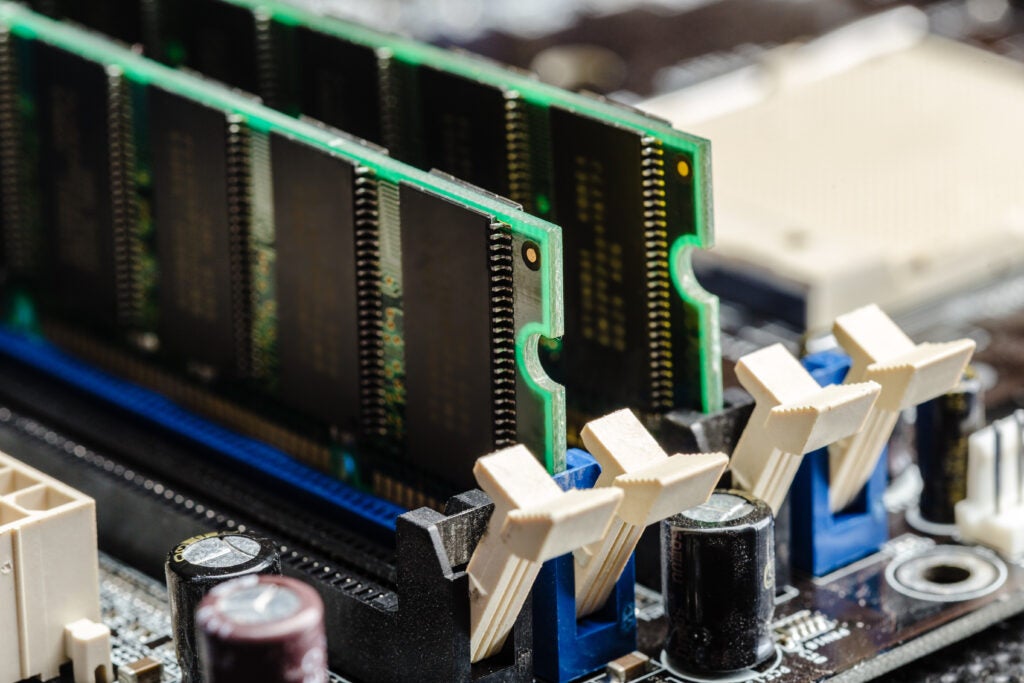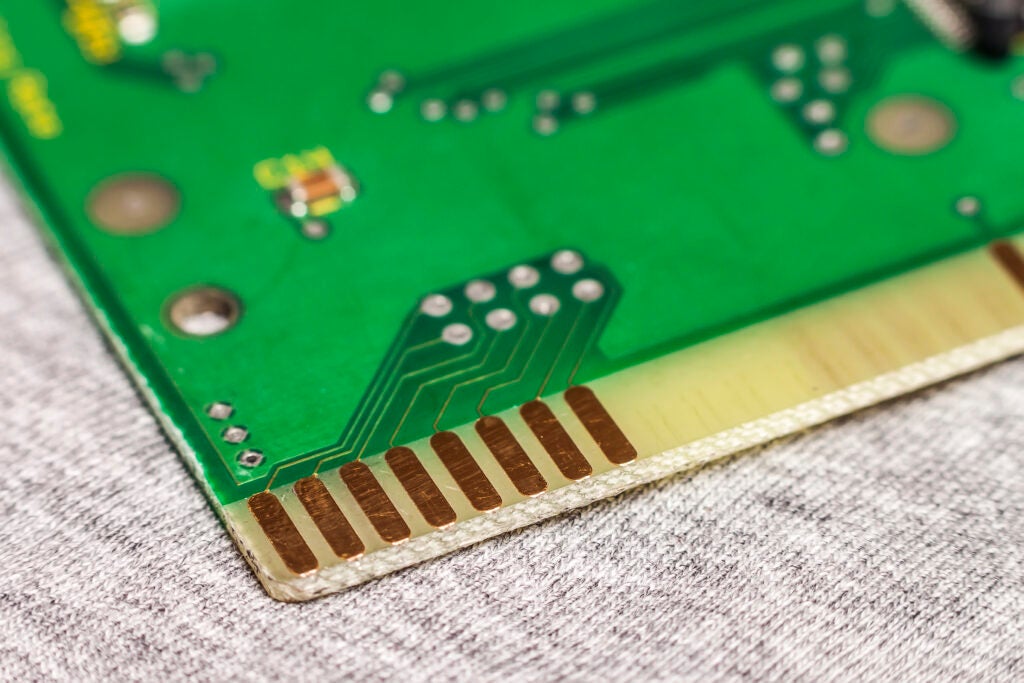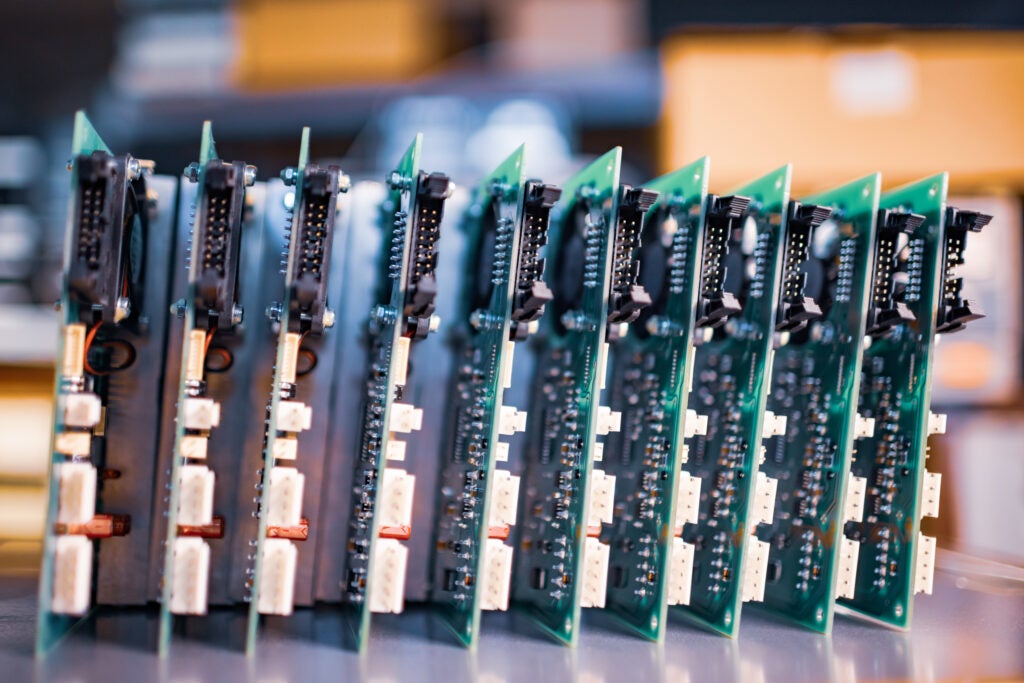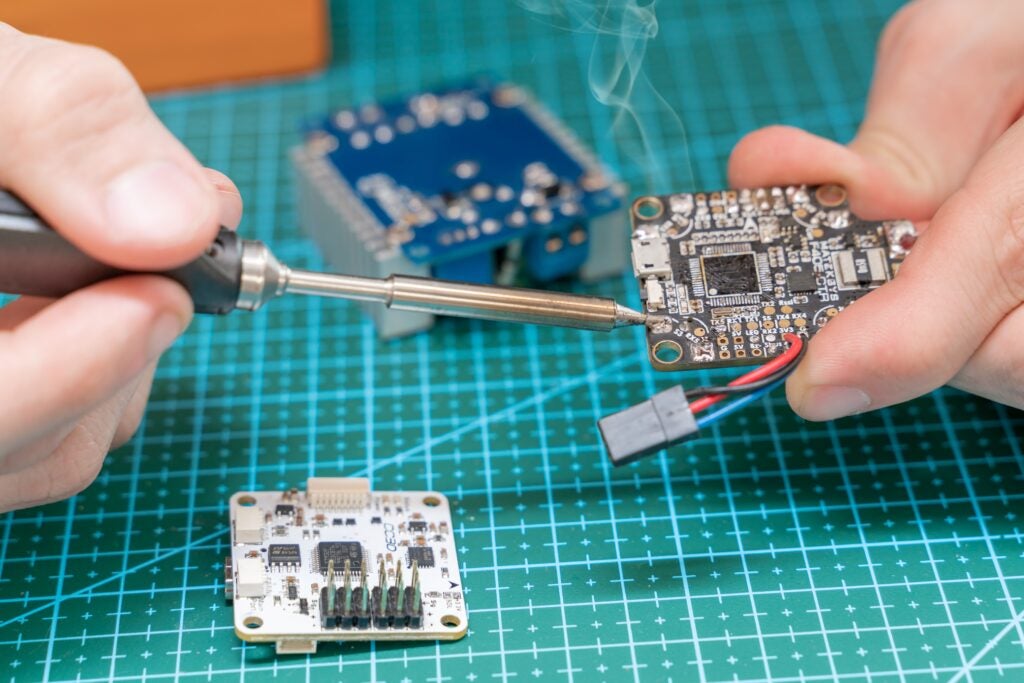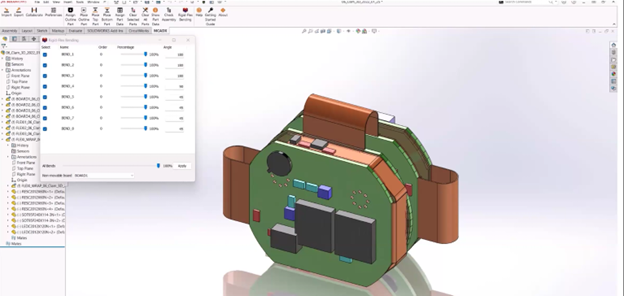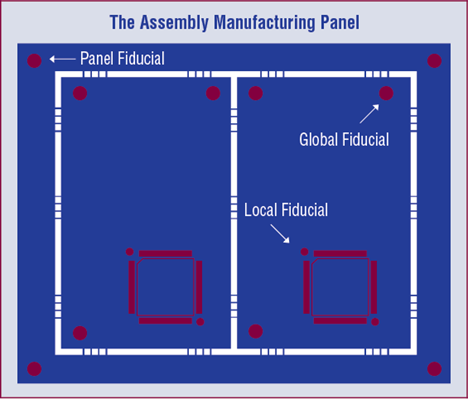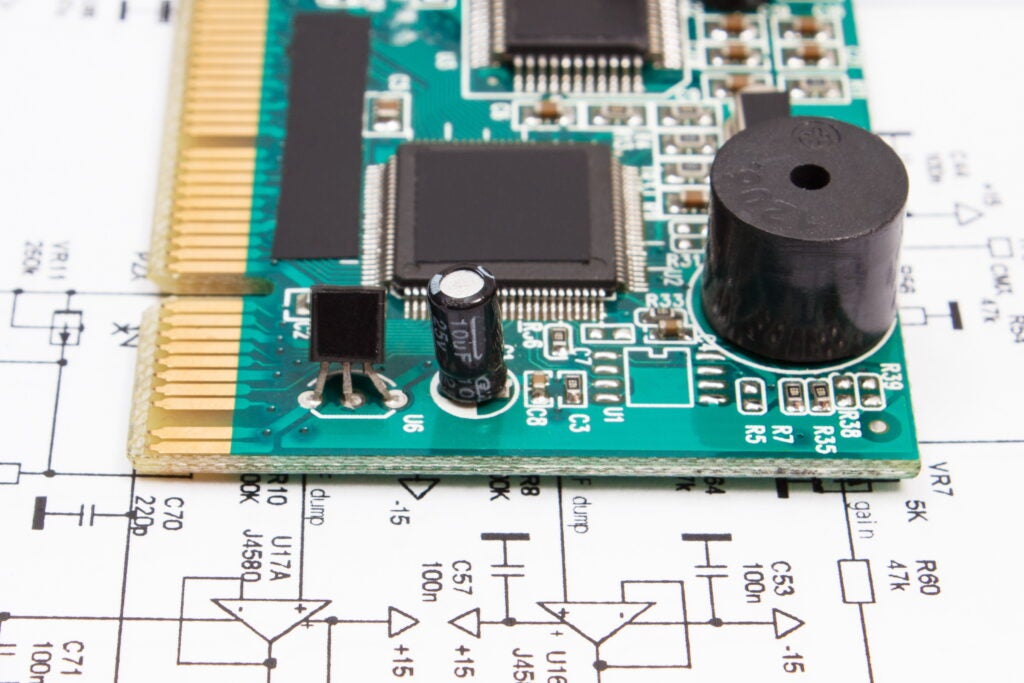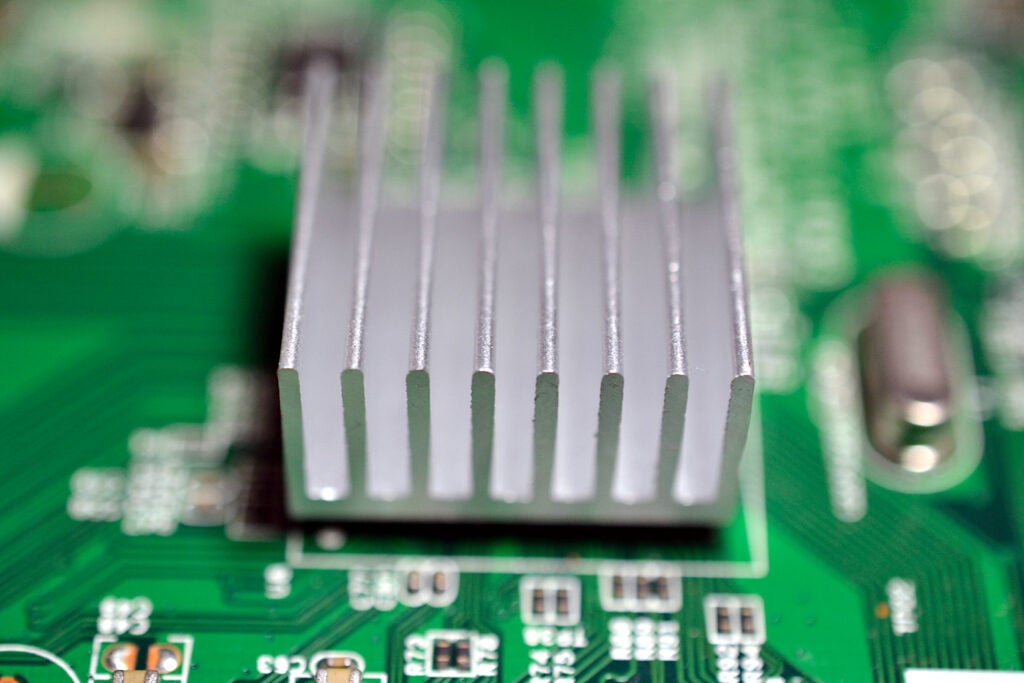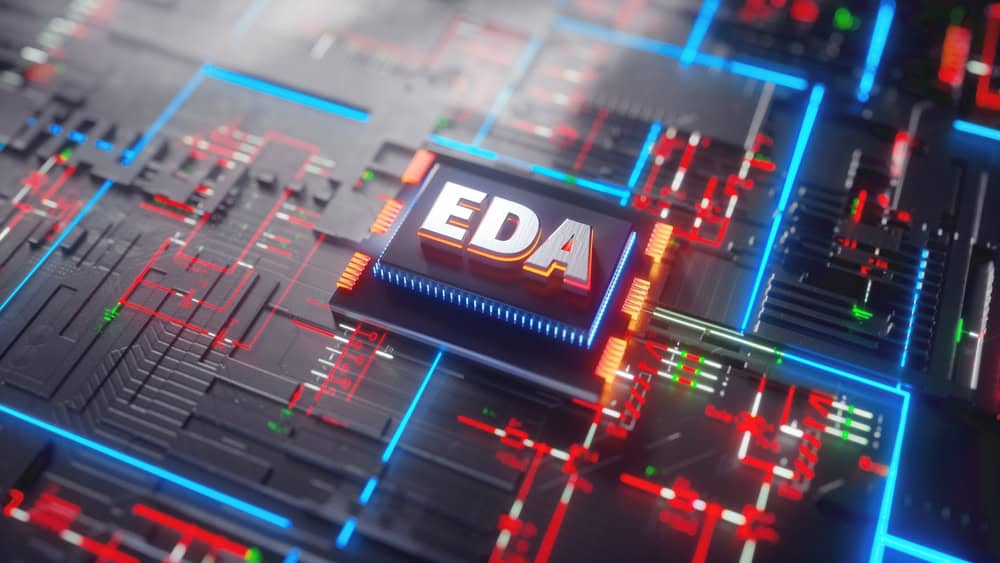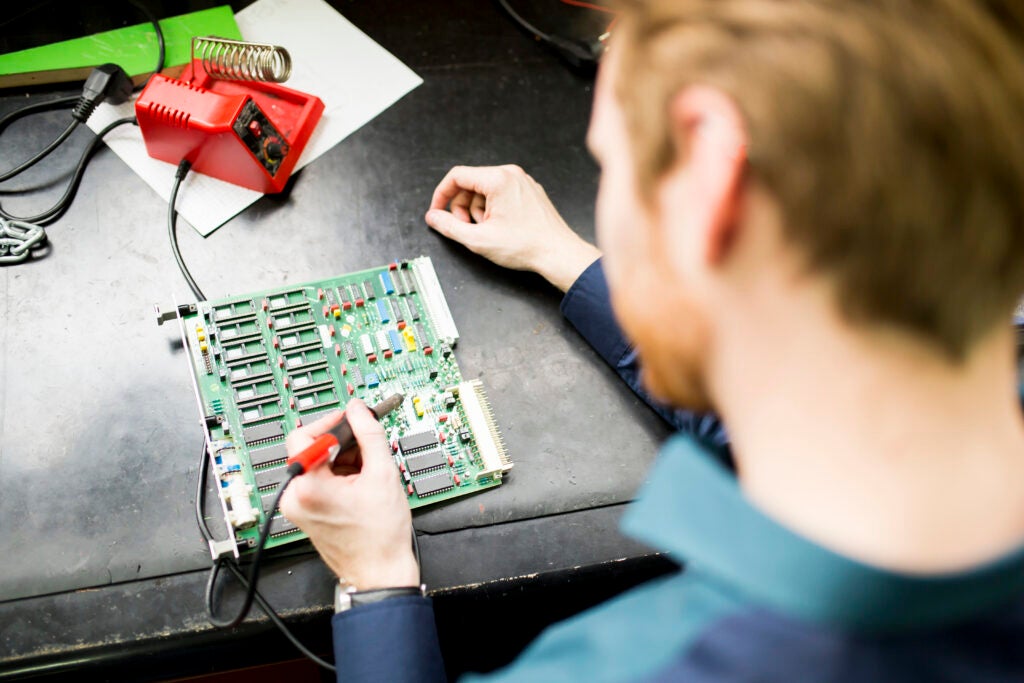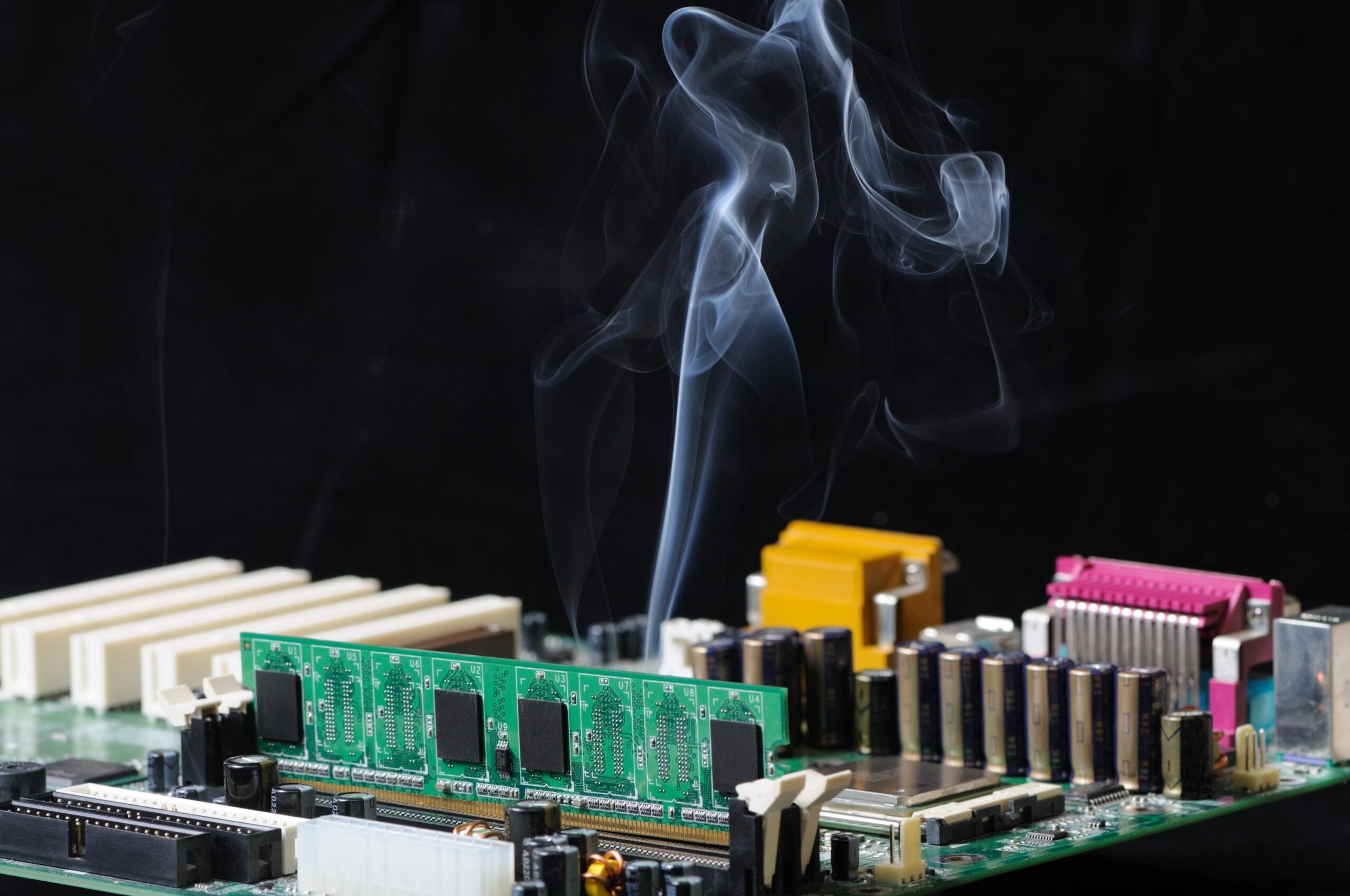
Thermal resistance in heat transfer determines whether your PCB design will succeed in the field or fail catastrophically due to overheating. When heat cannot efficiently move away from critical components, you face component degradation, signal integrity issues, and costly board respins that could have been prevented with proper thermal analysis during the design phase.
This guide covers the essential principles of thermal resistance, identifies the most common heat-related PCB failures, and provides actionable best practices for managing thermal challenges before they impact your project timeline and budget.
Thermal Resistance Properties of Common PCB Materials
Understanding the thermal resistance characteristics of your PCB materials is fundamental to effective heat management. Different board materials conduct and resist heat transfer at vastly different rates, as shown below. These attributes significantly impact your board’s ability to dissipate thermal energy effectively.
| Important PCB Material Heat Transfer Attributes | |||
| Material | Thermal Conductivity (W/m·K) | Thermal Resistance (°C·m²/W) | Best Use Case |
| FR-4 Standard | 0.3-0.4 | 2.5-3.3 | Low-power applications |
| High-Thermal FR-4 | 0.8-1.2 | 0.8-1.25 | Medium-power designs |
| Aluminum Core | 1.0-2.0 | 0.5-1.0 | LED and power electronics |
| Copper Core | 200-400 | 0.0025-0.005 | High-power RF applications |
| Polyimide | 0.12-0.35 | 2.9-8.3 | Flexible circuits |
| Rogers 4003C | 0.71 | 1.4 | High-frequency applications |
| Metal Core PCB | 1.0-8.0 | 0.125-1.0 | Thermal management critical |
| Ceramic | 15-30 | 0.033-0.067 | Extreme temperature environments |
The thermal resistance values in this table directly correlate to how quickly heat will form hot spots on your PCB, typically around components like microprocessors or high-energy radiators. Materials with higher thermal resistance create bottlenecks that trap heat, while lower thermal resistance materials allow thermal energy transfer more readily. It should be noted that board surfaces are intended to help insulate current paths from each other to mitigate issues, such as surface tracking.
Critical Problems Caused by Excessive Heat on PCBs
In addition to knowing the options available for board material selection, awareness of the problems that inadequate thermal resistance to heat transfer can lead to is critical. These potential contingencies can be conveniently grouped into component-level, board-level or system-level categories.
Categories of Excessive PCB Heat Problems
Component-Level Failures:
|
Board-Level Issues:
|
System-Level Consequences:
|
Designing for Effective Thermal Resistance in Heat Transfer
As mentioned above, the rate at which heat is transferred through a material is a physical attribute that cannot be modified. Therefore, your thermal resistance to excessive heat transfer should begin with your choice of PCB material(s). Characteristics such as the coefficient of heat expansion (CTE), glass transition temperature and dielectric constant should influence your choice.
Knowing and adhering to industry standards is also essential. According to IPC-2221 standards, maintaining component temperatures below their maximum ratings, which is typically 0° to 70° C for commercial, -40° to 85° C for industrial and -55° to 125° C for hazardous applications like aerospace and military, requires careful attention to thermal resistance calculations and heat dissipation strategies throughout the PCB design process.
Effective Thermal Resistance in Heat Transfer Guidelines
Excess heat is the most destructive problem PCB designers and engineers face. The increasing demands of higher performance from smaller boards often translate into higher power components in less well-ventilated environments, which only exacerbates the importance of incorporating a thermal resistance to heat transfer strategy, as listed below, into your design workflow.
Thermal Resistance in Heat Transfer Strategy Requirements
- Understand the thermal contingencies your deployed board may encounter
- Make sure components can safely operate in the deployment environment
- Ensure board parameters are well above physical stress levels expected
- Incorporate EMI/EMC considerations into the design
- Select board materials based on attributes and application
- Match your board material with the design application
- Follow the specifications and guidance from industry standards
- Know and follow current carrying capacity limits for traces
- Follow recommended creepage and clearance requirements
- Institute PCB layout best practices for high-power boards
- Position power planes strategically
- Minimize thermal barriers
- Consider asymmetric stackups
- Use thermal interface materials, like heatsinks and thermal vias
- Employ simulation to verify that your heat dissipation is effective
- Ensure your simulation solution performs component-level analysis
- Ensure your simulation solution performs PCB hotspot recognition
- Ensure your simulation solution performs 3D thermal modeling
- Ensure your simulation solution performs electrothermal co-simulation
- Ensure your simulation solution performs what-if scenario analysis
- Ensure the simulation solution integrates with your EDA software
- Ensure the simulation solution is scalable
As shown above, it is essential to know how to design for effective thermal resistance in heat transfer. However, you must also employ the best thermal simulation software to do so. Depending on where you are in the design process, Celsius, PSpice, and/or Sigrity may be the best option to explicitly address your capability needs and satisfy all of the requirements listed above.
To best integrate this advanced software, you should look to the engineer’s choice for PCB design software resources and training, EMA Design Automation.
EMA Design Automation is a leading provider of the resources that engineers rely on to accelerate innovation. We provide solutions that include PCB design and analysis packages, custom integration software, engineering expertise, and a comprehensive academy of learning and training materials, which enable you to create more efficiently. For more information on effective PCB thermal resistance in heat transfer implementation and how we can help you or your team innovate faster, contact us.

